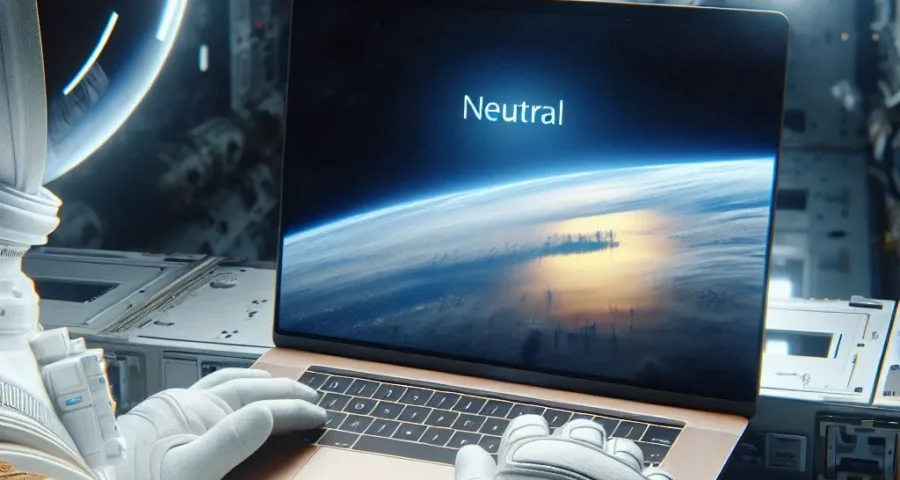Introduction
The integration of laptops into space missions marks a significant milestone in the evolution of space exploration technology. From early calculations performed by hand to the sophisticated computing power of modern laptops, this article delves into the historical context, technological advancements, and the reasons behind the adoption of laptops in space missions.
The Evolution of Computing in Space
Early Days: Calculators and Mainframes
In the early days of space exploration, astronauts relied heavily on mechanical calculators and large, room-sized mainframe computers. These machines were limited in their capabilities and often required manual input for calculations related to navigation, orbital mechanics, and other critical operations.
Introduction of Personal Computers
As technology advanced, the introduction of personal computers in the late 20th century revolutionized how data was processed in space. Laptops began to emerge as a viable option for astronauts, providing portability and enhanced computational power. The shift from bulky equipment to compact, lightweight devices was essential for the limited space aboard spacecraft.
The Necessity for Laptops in Space Missions
Enhanced Computational Power
Laptops offer a level of computational power that was previously unattainable in the confined environment of spacecraft. Tasks such as data analysis, mission planning, and real-time problem-solving became feasible with the ability to run complex software applications.
Real-Time Communication and Data Handling
Real-time communication is crucial for mission success. Laptops enable astronauts to send and receive updates, streamlining communication with mission control. Additionally, they facilitate efficient data handling, allowing astronauts to store and analyze vast amounts of information collected during their missions.
Case Studies of Laptop Integration in Space
NASA’s Space Shuttle Program
The Space Shuttle program was one of the first to incorporate laptops extensively. During missions, astronauts utilized laptops for navigation, systems monitoring, and experiment management. The flexibility and performance of these machines proved invaluable in the dynamic environment of space.
International Space Station (ISS)
The ISS continues to push the boundaries of space exploration, and laptops are integral to its operations. Astronauts use them for science experiments, communicating with ground control, and even personal leisure activities like watching movies and browsing the internet. This accessibility helps maintain morale during long missions.
Technological Innovations and Future Predictions
Miniaturization and Performance
As technology advances, laptops are becoming smaller, lighter, and more powerful. Future missions may leverage ultra-lightweight devices with advanced capabilities, enhancing astronauts’ ability to conduct research and manage complex systems in space.
Artificial Intelligence Integration
The future of laptops in space may also involve artificial intelligence (AI). AI can assist astronauts in making real-time decisions, analyzing data, and predicting system failures before they occur. This predictive capability could be a game-changer for long-duration missions.
The Pros and Cons of Laptops in Space
Pros
- Portability: Laptops are lightweight and easy to maneuver in cramped quarters.
- Versatility: They can be used for a variety of tasks, from scientific research to personal use.
- Real-Time Data Processing: Laptops enable immediate analysis and decision-making, critical in dynamic situations.
- Enhanced Communication: Laptops facilitate continuous communication with mission control, improving mission management.
Cons
- Vulnerability: Despite their capabilities, laptops can be vulnerable to malfunctions due to the harsh environment of space.
- Power Consumption: Laptops require power, which is a limited resource on spacecraft.
- Training Required: Astronauts must be trained to use laptops effectively, adding to the complexity of mission preparation.
Cultural Relevance and Personal Anecdotes
The presence of laptops in space missions represents a cultural shift in how we view technology in extreme environments. For many astronauts, the ability to connect with loved ones through email or social media makes the isolation of space more bearable. Personal stories from astronauts often highlight how laptops have become a bridge to Earth, helping them maintain their mental well-being during long missions.
Conclusion
The journey of laptops from Earth to space reflects humanity’s relentless pursuit of knowledge and exploration. As technology continues to evolve, so too will our tools for exploration. Laptops have already become invaluable assets aboard spacecraft, and their future in space missions looks promising. The combination of portability, computational power, and connectivity ensures that laptops will remain a crucial part of space exploration for years to come.


Leave a Reply